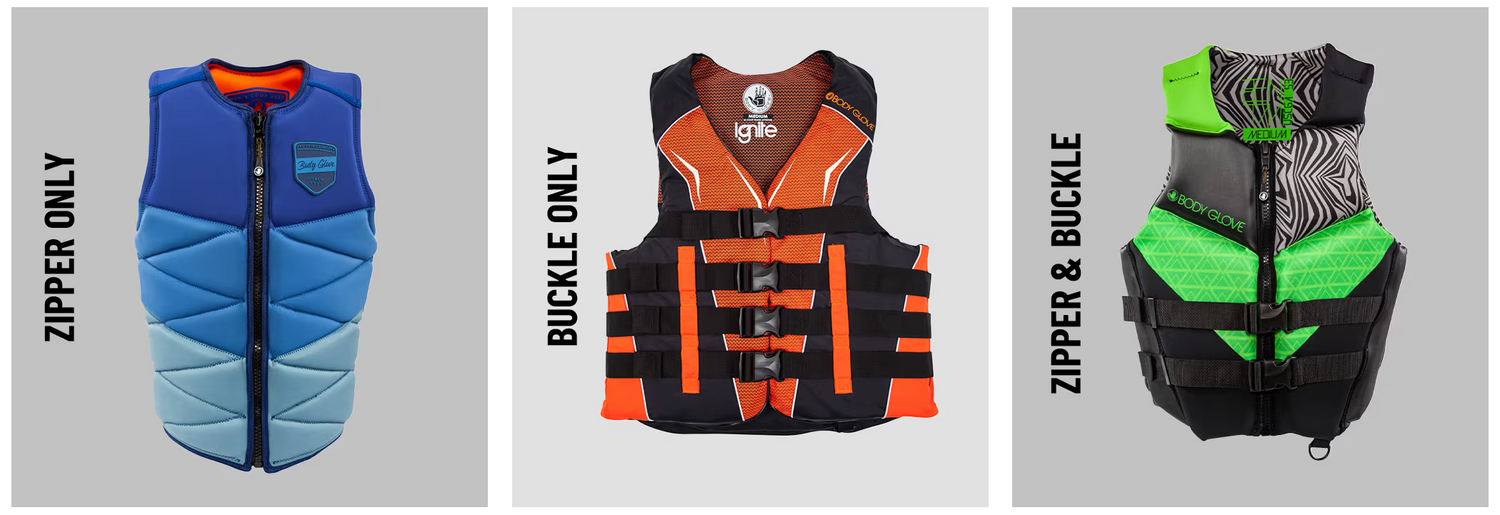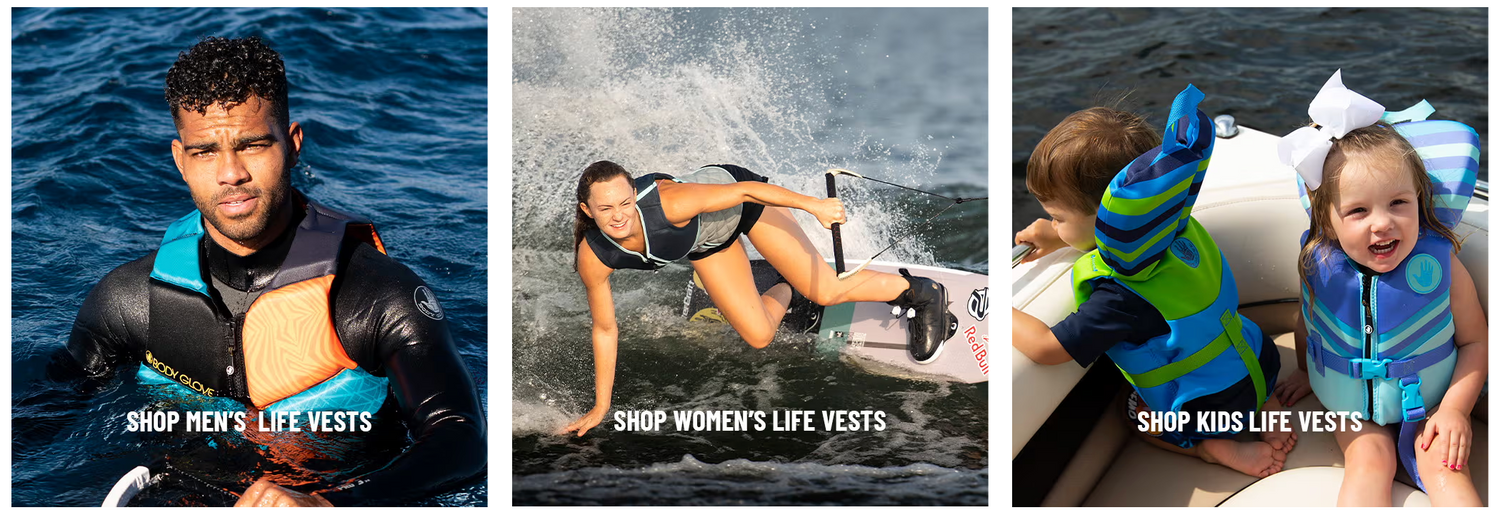Your Cart is Empty
LIFE VEST BUYING GUIDE
As a lifelong watersports brand, we take safety on the water seriously. That's why we've focused on developing a wide range of comfortable, versatile, and reliable personal flotation devices (PFDs) for the entire family. Please reference this PFD buying guide to help ensure you purchase the life jacket best suited for your water activity. We recommend you always use a U.S. Coast Guard-approved (USCGA) or Transport Canada-approved life jacket for your watersports activities. Both have government standards set by global safety certification company UL, whose mission is to deliver safety, quality, security, sustainability, and confidence to the life-jacket market. Life jackets or life vests—commonly categorized as personal flotation devices—are available in a wide variety of styles, each specifically designed for different water activities, including boating, using personal watercraft, wakeboarding, paddleboarding, river rafting, and learning to swim. Whether your PFD requirement is for basic water safety, use as a learn-to-swim aid, or for high-performance watersports like wakeboarding or white-water rafting, the right PFD should provide life-saving flotation in case of an emergency.
Read on to learn how to buy a PFD that best fits your needs, activity, sport, and size.


MATERIALS & OPTIONS
There are two types of materials commonly used in PFD construction: neoprene and nylon. Neoprene vests are softer, more comfortable, and tend to flex slightly when wet. They typically come with both a front zipper and two front buckles for a customized, snug fit. Nylon life jackets do not have stretch properties and fit similarly both in and out of the water. They typically do not include a zipper and will have more than two buckles to help ensure a snug fit. Whichever life jacket style you choose, it's important to make sure your PFD has a tight and snug fit before entering the water.
Once you have determined the type of PFD you want, it's critical that you take the necessary steps to find the ideal fit. Follow the instructions both in the video above and noted below to find your best fit. When referencing the size charts below and taking your own measurements, place a soft measuring tape under the arms to measure the fullest, widest part of your chest or belly while sitting down. A properly fitting life vest differs from your typical clothing size and should not be based on personal tight- or loose-fit preferences. The vest should have a snug fit. Examine the Body Glove PFD label to ensure the vest is the proper size for the wearer's measurements and weight. Try the vest on and make sure it's properly fastened to a snug fit with buckles and zippers secured. Hold your arms straight over your head and ask a friend to grab the top of the vest's arm openings and gently pull up; the life jacket should not ride up over the chin and face nor should it have excess room above the arm openings. The vest should fit like a second skin and should always remain flush to the body. We recommend putting the life jacket on and adjusting the fit while in shallow water under safe and supervised conditions. A good-fitting vest should not move on your body while in the water. The shoulders of the vest should remain snug and not rise up to the ears. Body Glove uses premium materials and construction, and we fit test all our life jackets to ensure you are getting the best possible product on the market. Please follow all the simple steps in this life vest guide to ensure a fun, safe time on the water for the whole family.

